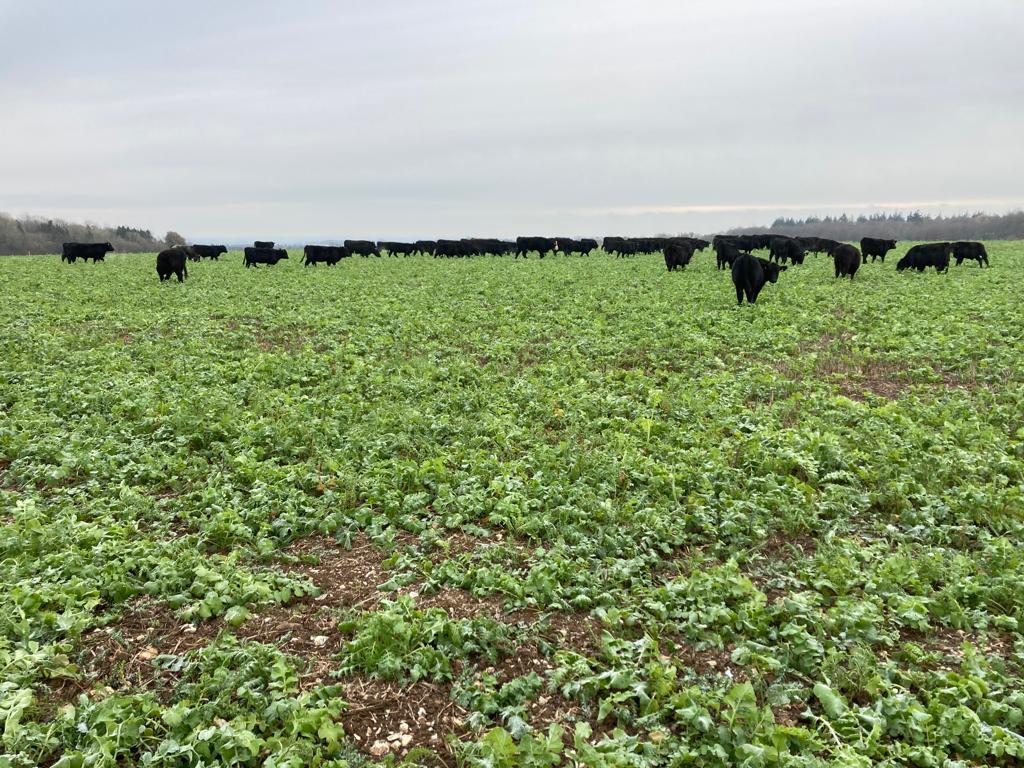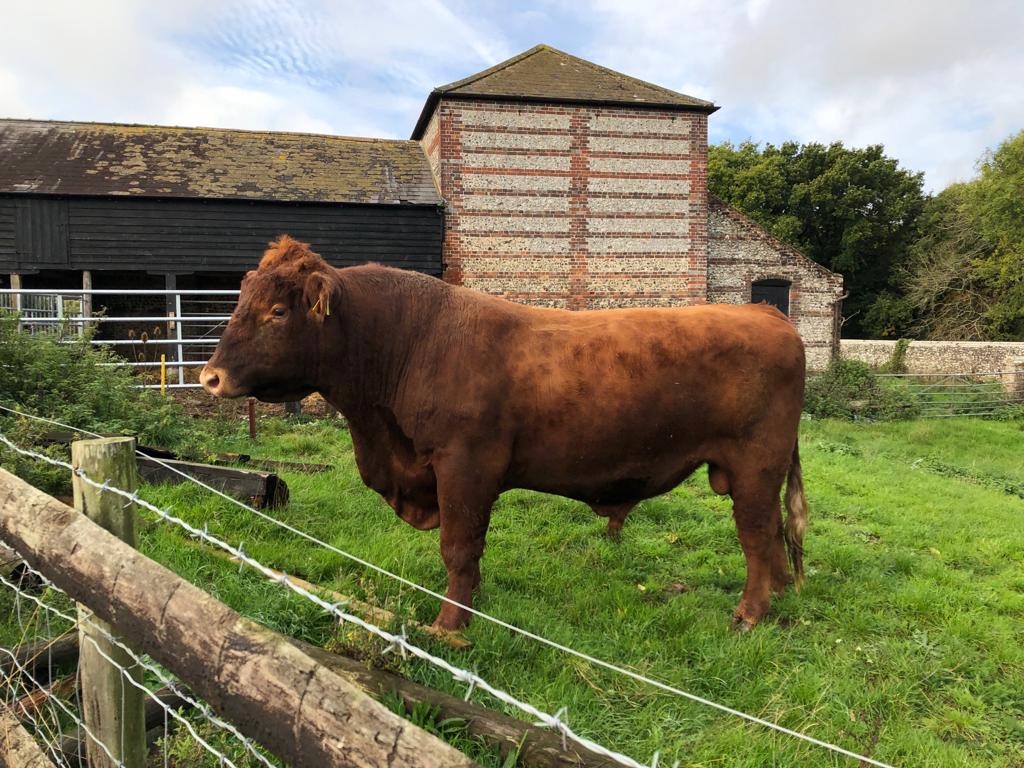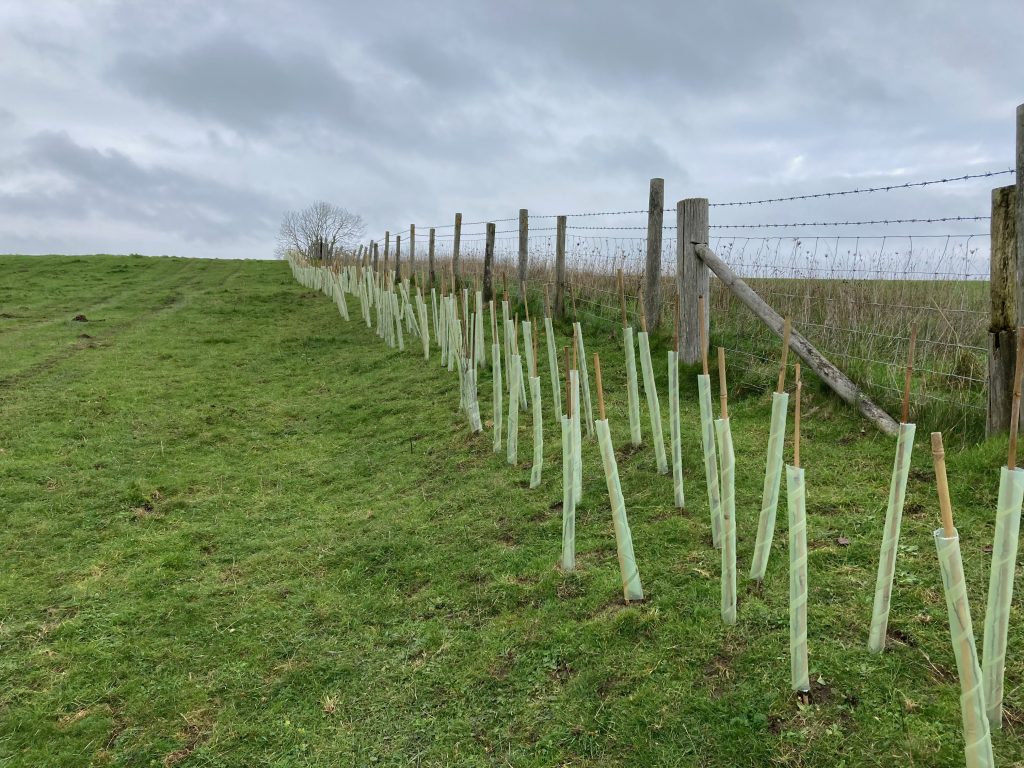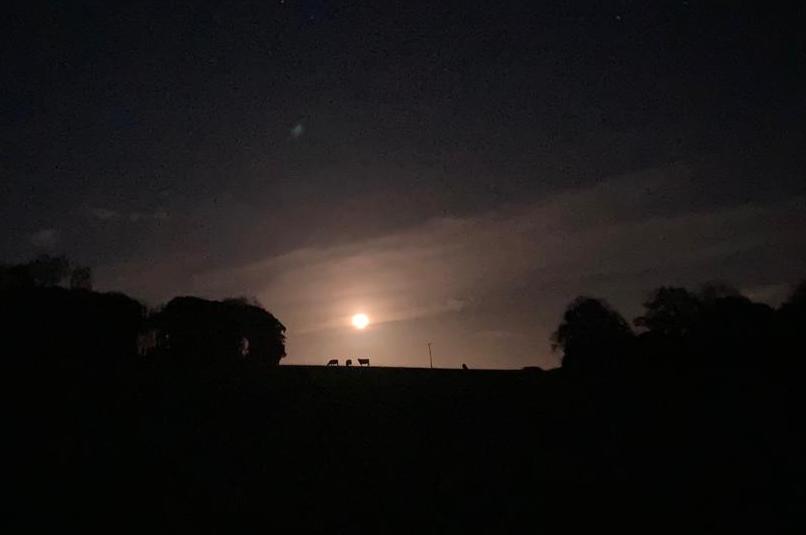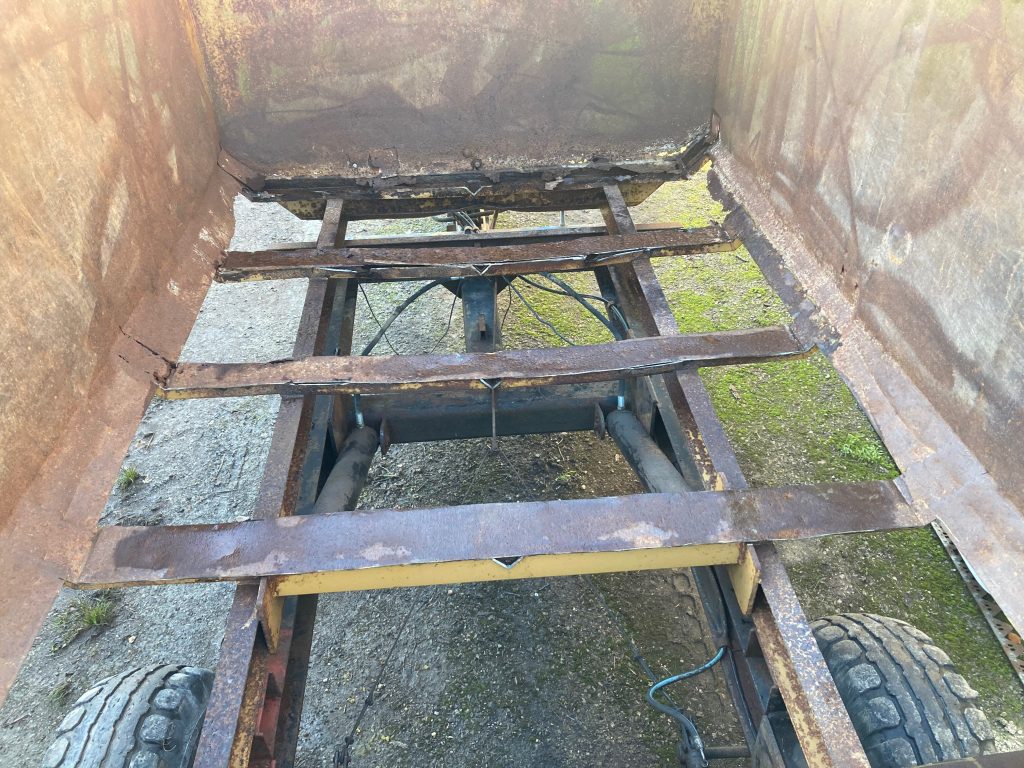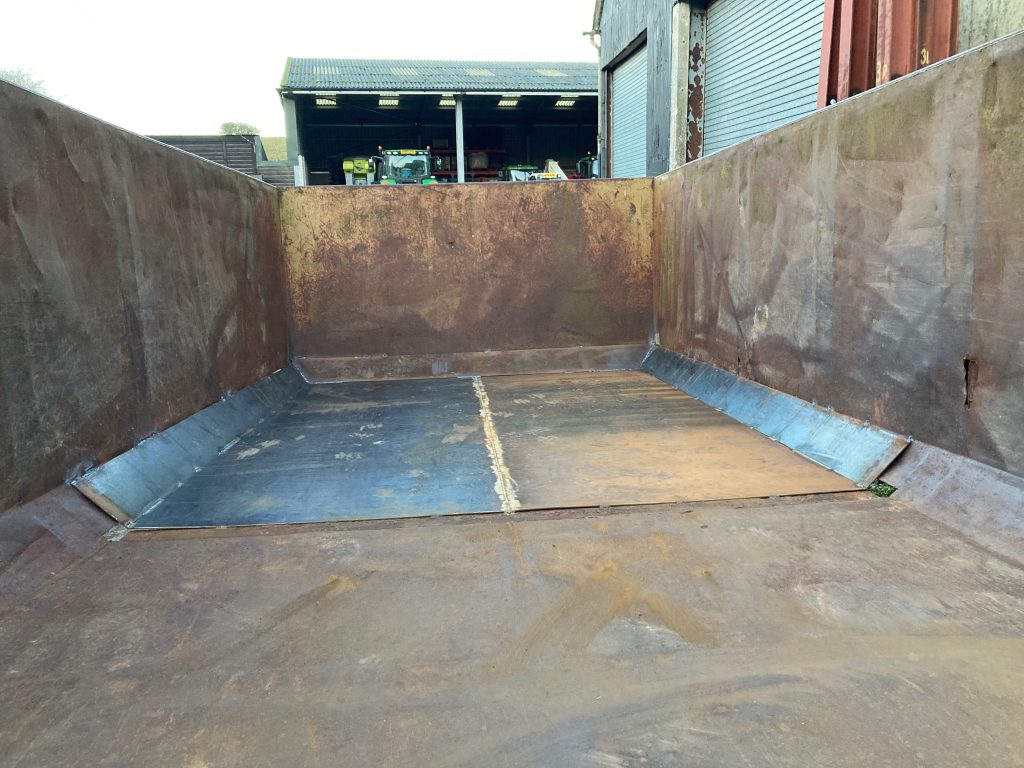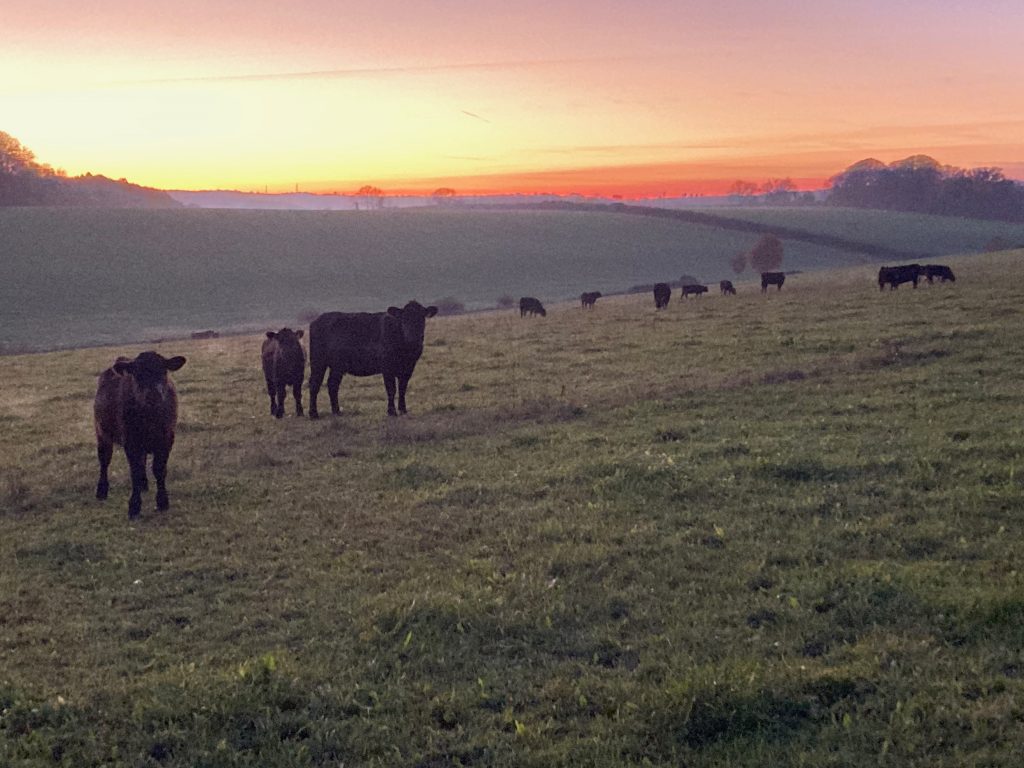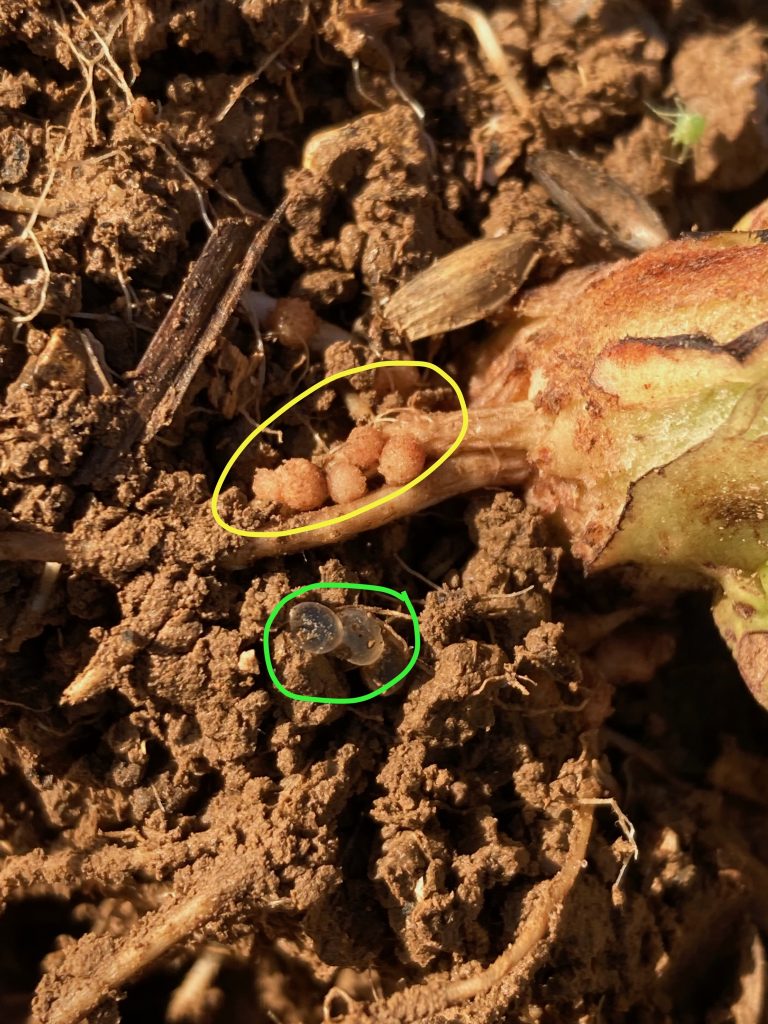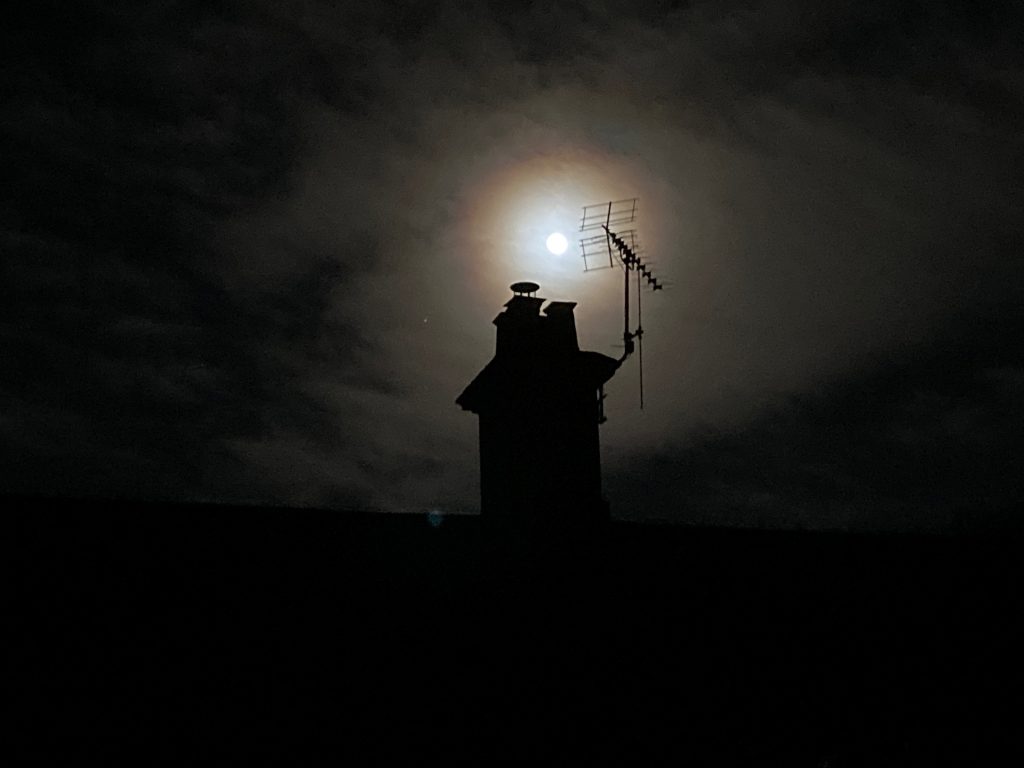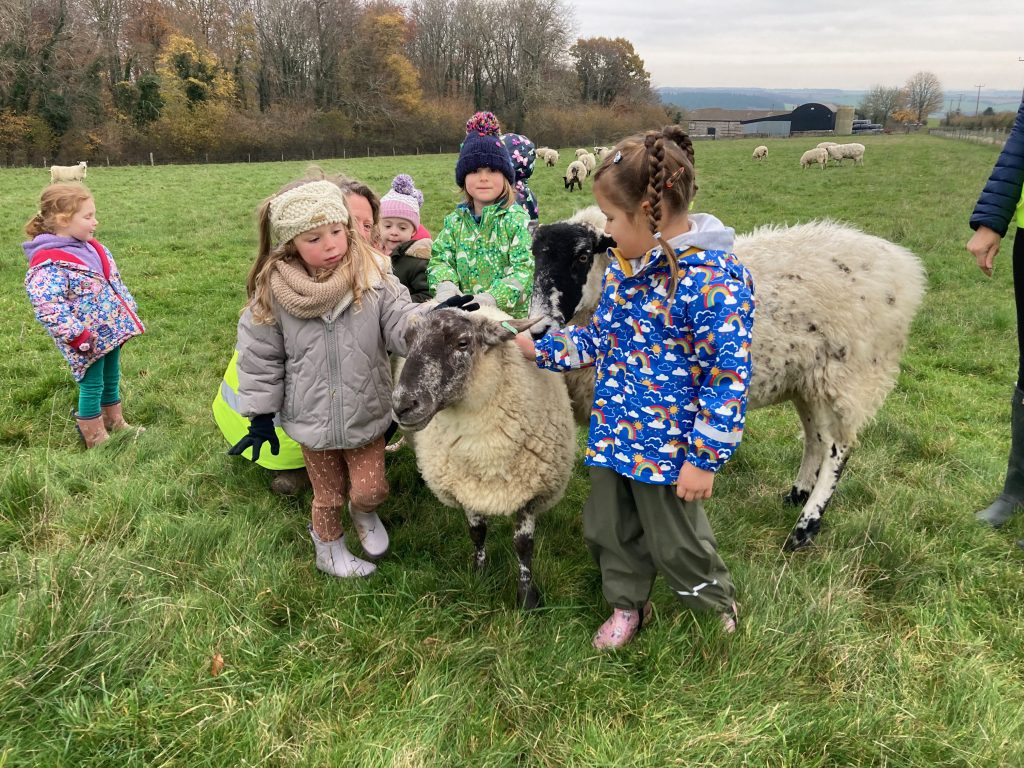
This picture demonstrates very clearly why we still keep a few sheep. In farming terms they are unproductive, they can denude a landscape with their persistent nibbling, they attract every ailment you can imagine, such as footrot, scab, and worms, they get hopelessly stuck on their backs in hot weather, they get stuck in brambles. Their wool, once the mainstay of our nation’s productive output, and despite its undeniable magical properties, is now a valueless annoyance which no-one has had the patience to breed out of them, and their meat, well if you can find any amongst the bones and fat then you are clever than I.
However, they make excellent pets. You can leave them outdoors all year round, they can survive on very little food and don’t drink much water, and you can turn up in the field with a group of tiny schoolchildren, where the sheep will gallop towards us, in search of titbits. Once the toast has been distributed most of the sheep wander off, but the best ones remain to entertain the children in the gentlest fashion. The children are mostly fearless, and the sheep reward their bravery with great patience.
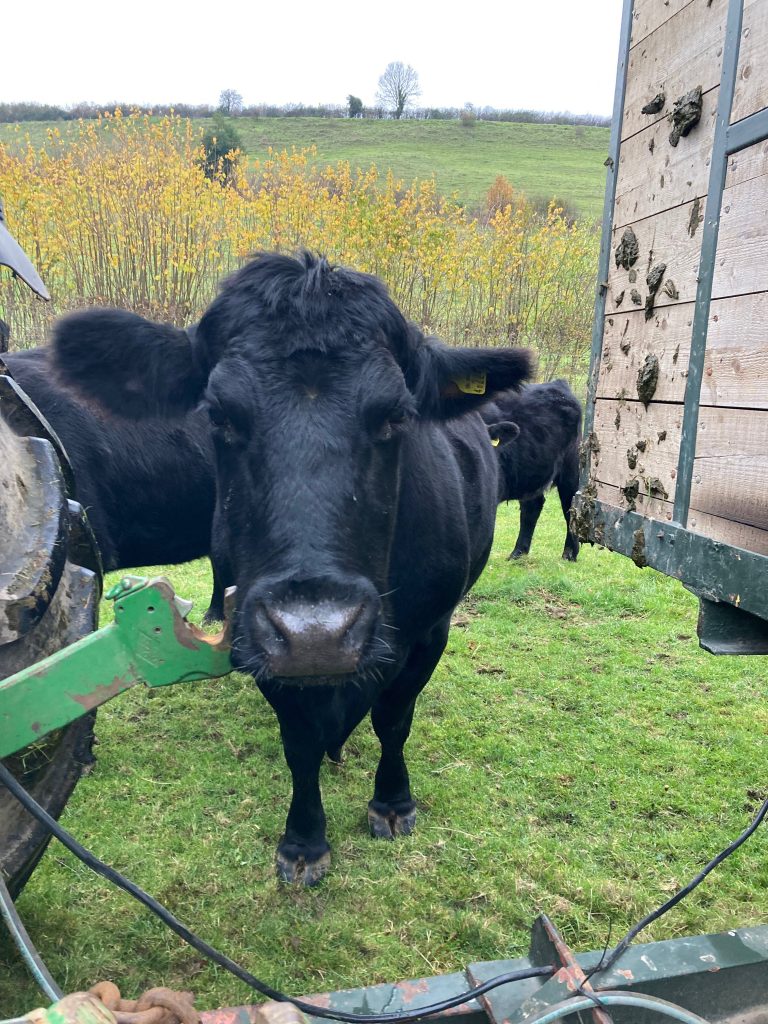
This was the first time we have tried a school visit in December, lucky with a bright sunny, if cold, day, the children were well wrapped up and we had a lovely time exploring growing crops, we even found some worms, and we visited the cows, where 2244 wanted part of the action, here she is checking I have the trailer safely attached to the tractor. We finished off with a woodland walk and looked at bird food plots in the fields.
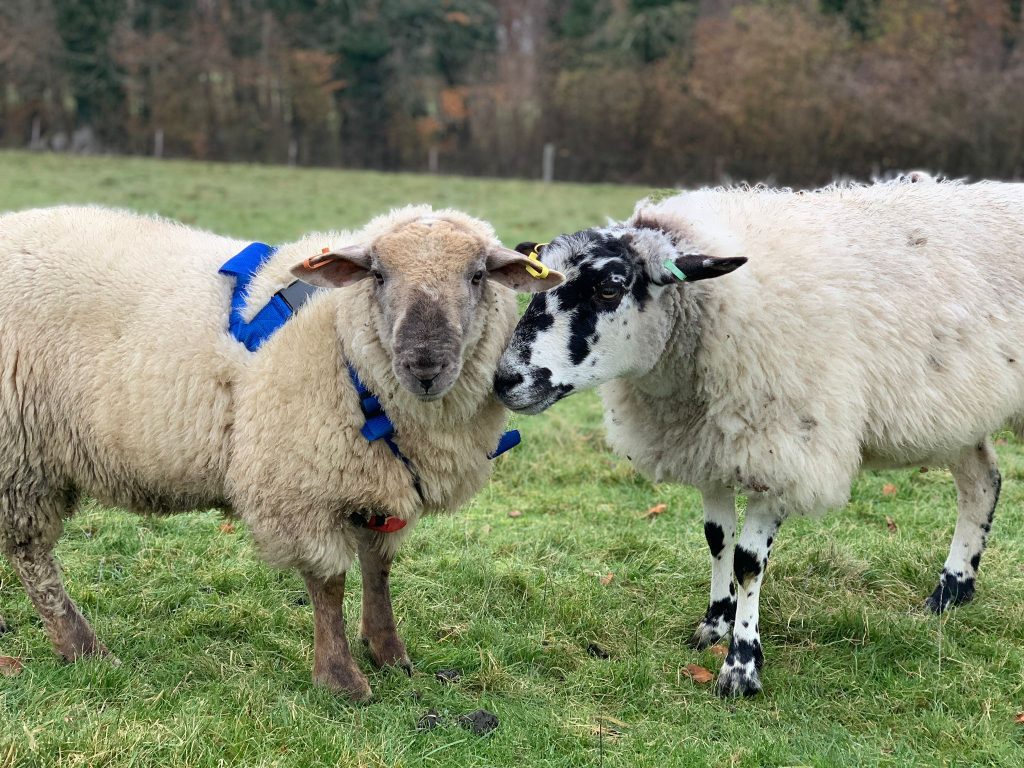
Further excitement followed in the sheep field a few days later when we introduced our new young crossbred ram Reggie. Professional sheep farmers may weep as they read this, however the paragraph above should have prepared them for this amateurish approach; No condition scoring, no careful breed selection based on feed conversion rates or growth rates, we simply found an attractive looking and fairly tame animal locally, (he has quite a bit of Suffolk in him), of a size who might be able to manage the job required of him, he was only born in March, and let him loose with a red raddle crayon attached. 5 red bottoms on day one and several more in the following days reassured us that he knew what he was doing. Fingers crossed that they don’t all return for more when we change to a blue raddle after 17 days.
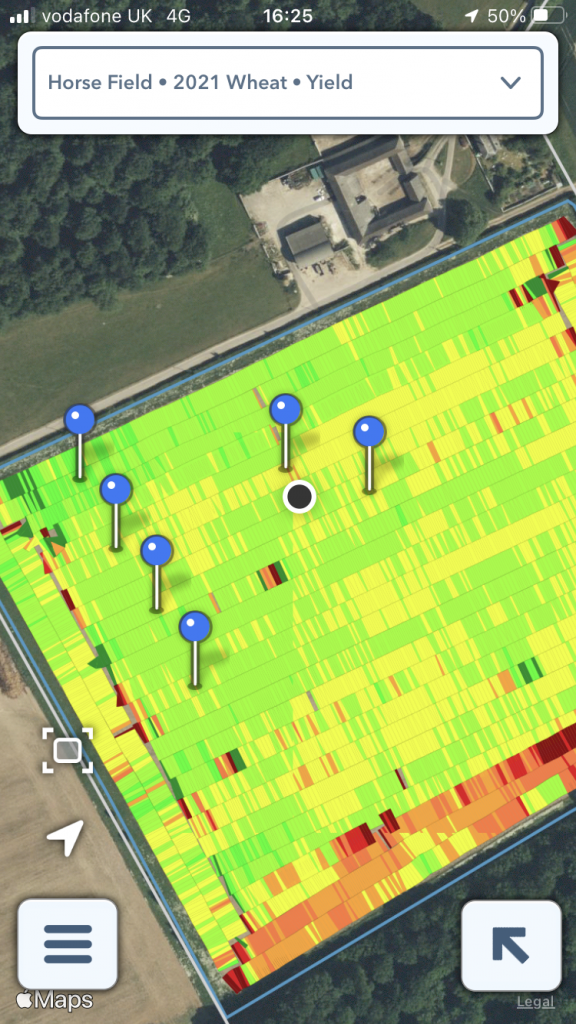
Here is a screenshot from a clever app which can help us to analyse the outcome of various tramline trials we carried out on this year’s crops. The yellow/green pattern represents the yield map generated by the combine whilst harvesting, green being better yield than yellow, with orange and red being progressively worse than yellow. The app, called ‘Climate Fieldview cab’ is from Bayer, one of the big agchem companies. Love them or hate them, they have the resources to put into developing clever stuff like this, not always just more chemicals.
The app allows you to select any area of the field you like, or individual passes of the combine, and it will then tell you the area and yield on that part of the field. So where we have applied a treatment to a particular part of a field, alternate tramlines in this case, we can then measure the effect of the treatment on yield. The blue pins represent where the tramlines are, I walked across the field and directly dropped each one in the right place as I crossed. This helps you to choose the right passes to include in the analysis, and to ignore the ones which run across two treatments. In this field we were testing a product which is supposed to reduce the amount of nitrogen lost to the atmosphere, by converting nitrogen oxide (NOx, potential pollutants) into plant feed. In this case we found no significant difference in yield between tramline treatments.
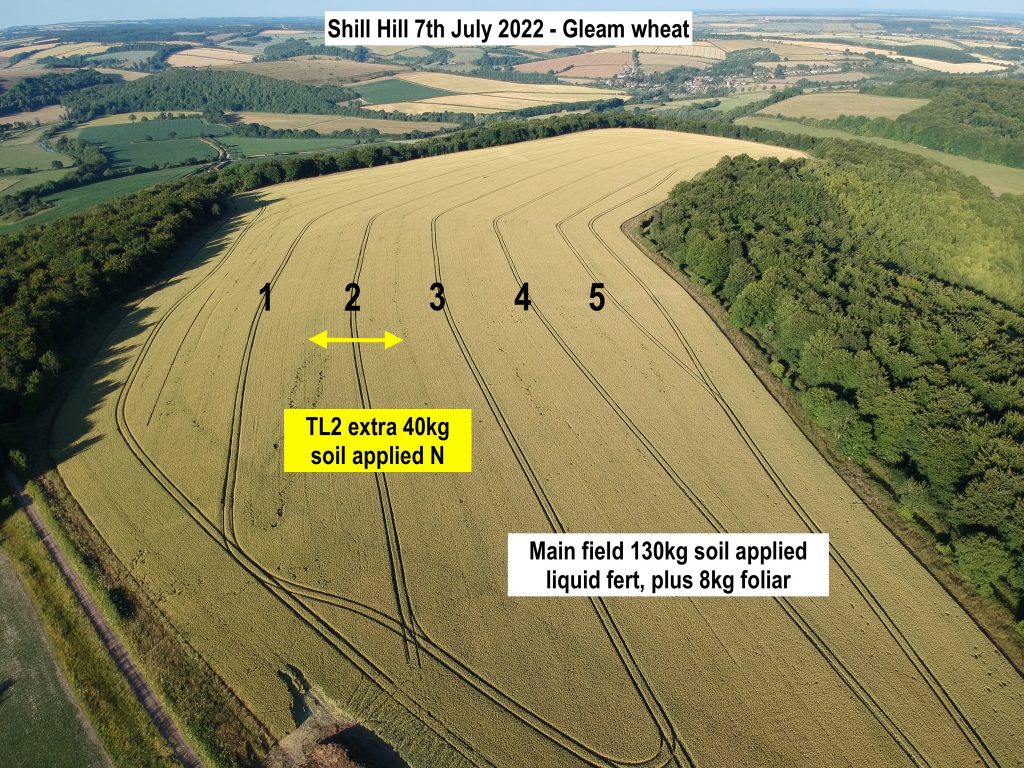
Elsewhere on the farm we wanted to test our nitrogen fertiliser policy on wheat, so we chose a single tramline in each of 4 different fields and applied an extra 40kg of nitrogen, then measured the difference using the app. We found that the extra 40kg produced extra yield between +5% and +8%. In 2021 a similar exercise increased yield from a minimum of minus 1% to +8%, here we used a difference of 50kg of nitrogen, with a higher base dose. If you have not already dozed off, you may now be asking “so what, it all depends on the value of grain and the cost of the fertiliser”, and you would be quite right. It also depends on when you sell the grain and when you buy the fertiliser, and whether you have to borrow the money to do so. A fair bit of number crunching and crystal ball gazing then needs to happen in order to decide the right approach for next season. We have already committed to buy next year’s fertiliser, at eye-watering prices. To leave it longer would have been reckless, we might not have been able to secure supply at all. So we are now very dependent on the grain price holding up to make the figures work and crop growing remain profitable. The trouble is that over the last 6 weeks the price of wheat has fallen £50 per ton, making a huge difference to predicted margins, so right now we are not looking so clever, (same as very many other farmers). Anyway we have the fertiliser in stock, though of course we don’t have to use it all if calculations suggest it won’t pay, we could hold some over for the following year, we have had to pay for it already though, a year before we will have a return from selling the grain it generates.
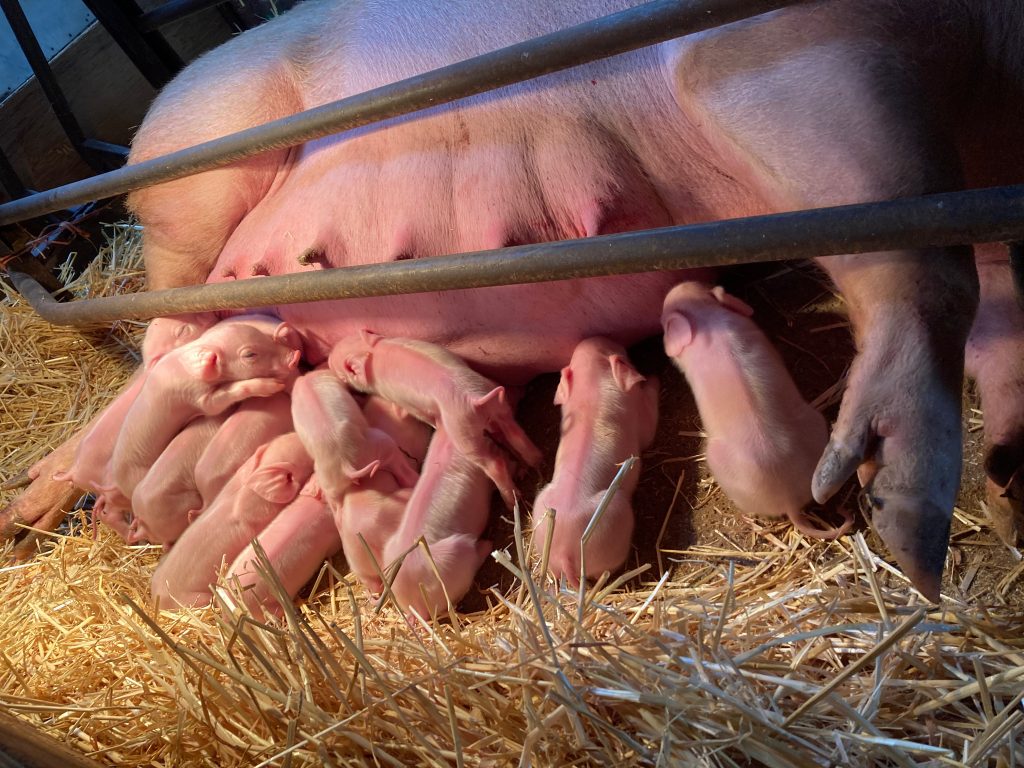
Welcome to the roulette wheel of farming. The old joke goes :How do you make a million from farming ? Answer: Start with two million. In some sectors like pigs, poultry and horticulture that is absolutely the case right now, with energy costs, labour shortage, and the intransigence of retailers leading to many producers saying “stuff this for a lark, I am not risking another production cycle when the prospects guarantee huge losses”, so they are not placing orders for new egg-laying chicks, productive sows are being slaughtered and not replaced, and the hort and protected (under glass) sector is reducing output after already two years of 30% crop being left unharvested due to lack of labour. The fear is that these producers don’t come back, and we throw ourselves ever more dependent on imported food supplies, which is the opposite to what many people say they want.
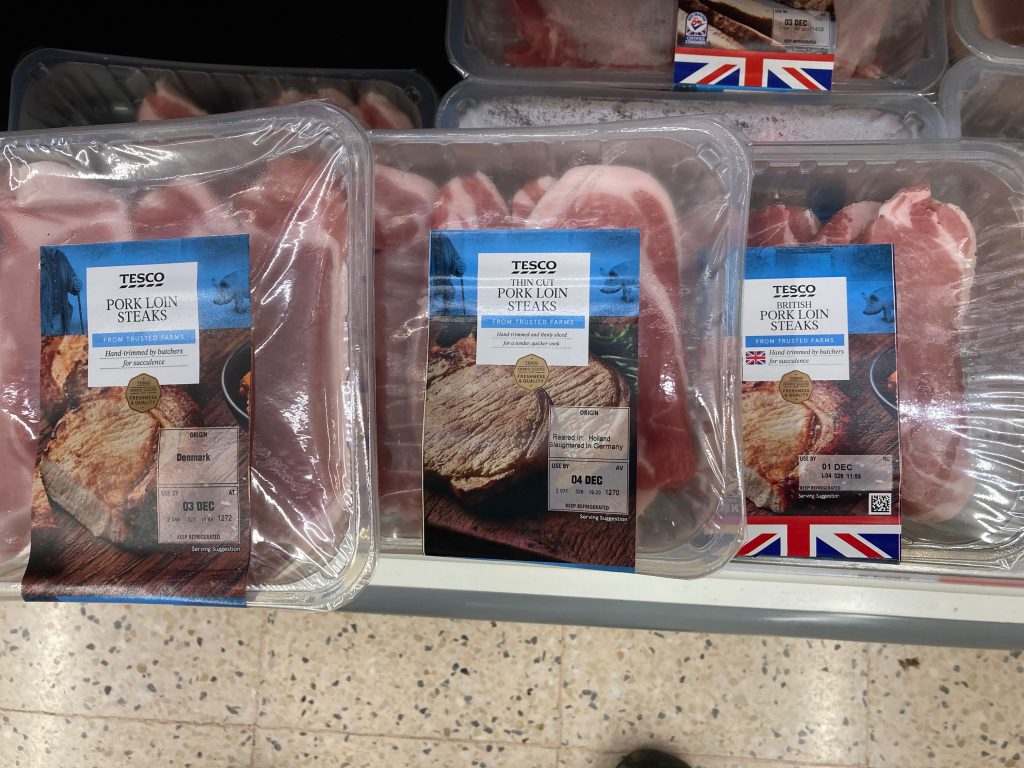
This picture illustrates part of the problem. Why does anyone need to import near identical products from overseas that we can produce here? Our production costs are higher even than Europe because of tighter welfare and other regulations, and we are now having to pay more for labour thanks to having become an unfriendly destination to foreign workers. So can anyone explain why we need to import Dutch, German or Danish pork loins? They are all the same price on the shelf. There only seems to be one likely outcome, answers on a postcard please. Or better, add a comment at the bottom.
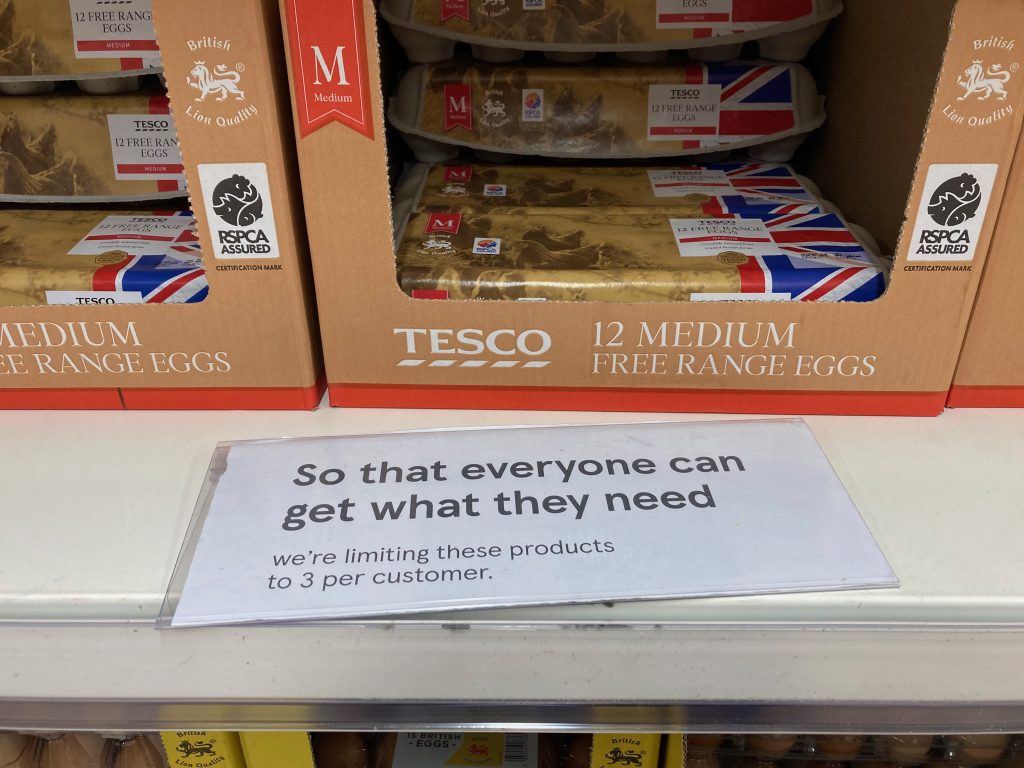
We had a couple of days of intense cattle work last week, separating cows and calves, sorting groups away to different parts of the farm. The cows are now indoors on straw bedding, eating hay, and all the youngstock, two age groups, 86 animals, are all together on the first field of cover crop. They are getting a fresh hectare every day, the first week on the frost has worked well. Today is has started raining and it will be messy for a while, but hopefully the daily move will mean not too much damage to the soil.
